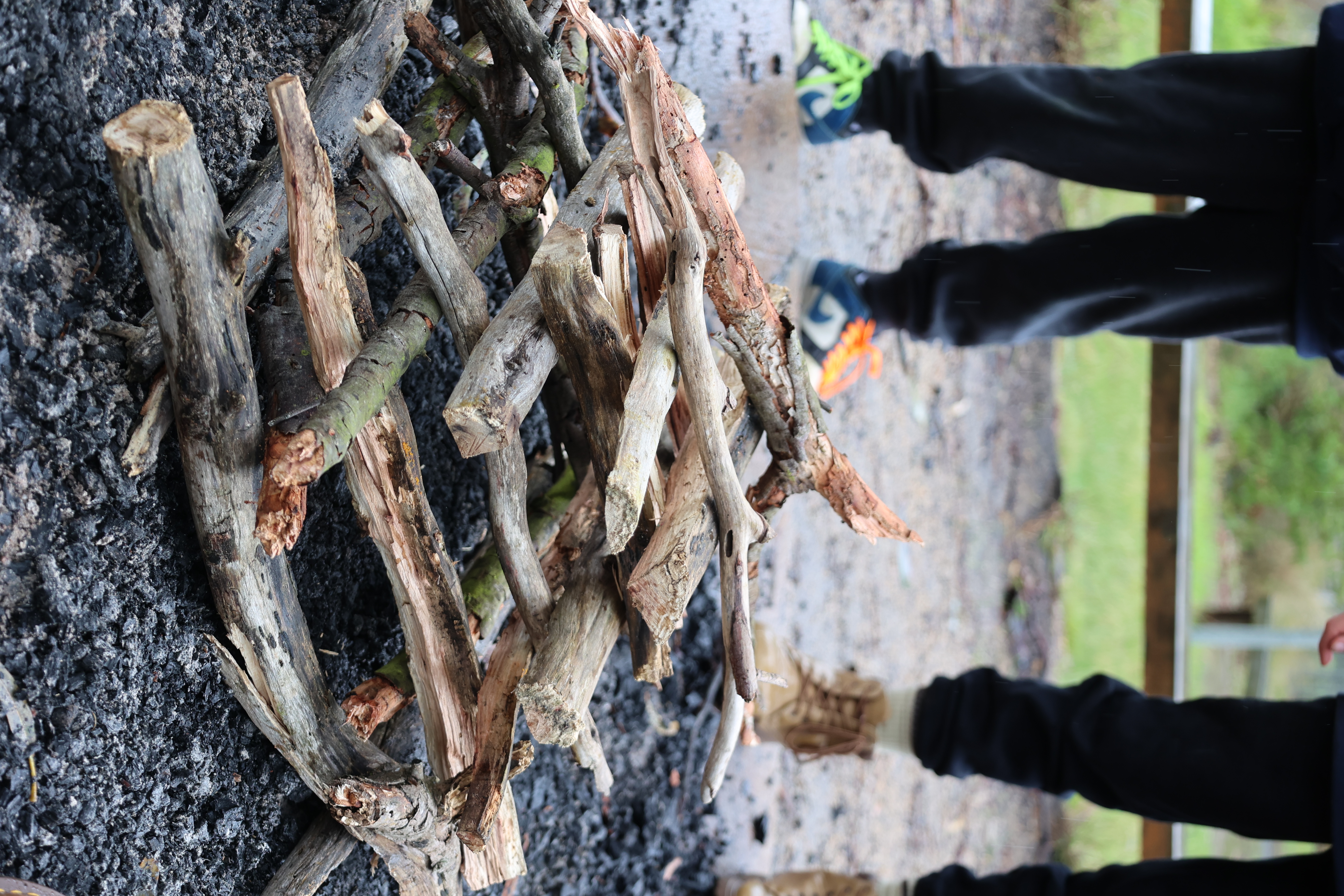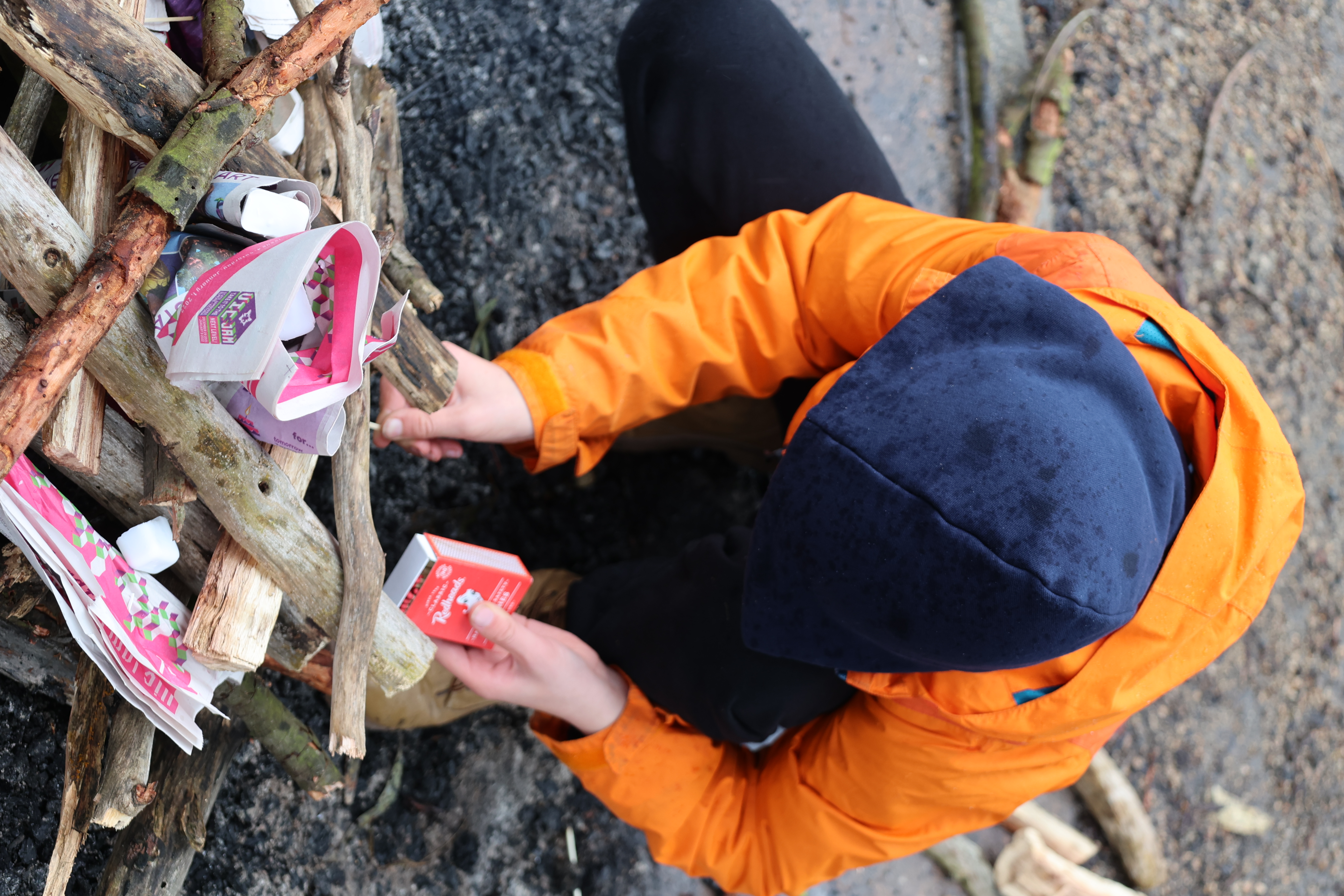Fuel the Flames: Master the Art of Campfire Building!
Embrace the timeless tradition of building a campfire!
Learn how to collect the perfect wood, construct a sturdy fire, and light it safely. Whether it’s for warmth, cooking, or sharing stories under the stars, this activity will spark your Scouting skills and ignite outdoor fun. Let’s gather ‘round and get glowing!
Before you begin
-
Use the safety checklist to help you plan and risk assess your activity. Don’t forget to make sure all young people and adults involved in the activity know how to take part safely.
-
Make sure you’ll have enough Leaders. You may need some parents and carers to help if you’re short on Leaders.
What you will need
- Tinder (for example, cotton balls and petroleum jelly)
- Kindling (for example, small sticks)
- Firewood
- Matches
- Fire bucket filled with sand
- Space to collect a variety of wood and build a fire
Getting ready to run this activity
Decide where you’ll build your campfire. Choose somewhere where groups will be able to collect a variety of woods – they’ll need twigs, sticks, and small branches or logs of various sizes.
Make sure the place you choose is safe and accessible for everyone, and that you’re able and allowed to build fires there.
You may want to bring a selection of different size wood along to supplement what everyone finds.
Staying safe around your campfire
-
Make sure everybody knows how to be safe around a campfire.
-
You could run fire safety activities, such as sitting safely by a
campfire, prior to building the campfire.
Collecting the wood
-
Gather everyone together and tell them that they’re going to learn to build a fire.
-
Everyone should split into small Patrols and an adult should join each small Patrol.
-
Each small Patrol should spread out across the space, in areas that are far enough away from the other Patrols. They should be at least five metres away as a good guide.
-
Each Patrol should clear their area so it’s free from debris and ready to build a fire.
-
Now everyone should collect wood. Remember
to collect a variety of sizes from small twigs to big logs. Dry wood that snaps and breaks easily is best as this burns well. -
Once a small Patrol has a big enough pile of wood, they should sort it into four piles:
The first pile should be wood about as thick as spaghetti. The second should be wood about as wide as a finger. The third should be wood about as thick as a wrist. The fourth should be wood wider than a wrist.

Constructing the campfire
-
Each Patrol should look at the example fires below, the star fire and the ground fire with tower. As a Patrol, decide which fire they’ll build, then think about how their sticks, twigs and logs will work best.
-
Each Patrol should build their fire in their clear space. They should make sure there’s plenty of kindling in the heart of the structure.
-
Once a Patrol is happy with their structure, they should get ready to light the fire.
-
They should make sure the area is clear and that no-one’s wearing anything that could dangle
into or over the flames.
-
A responsible adult should safely light the newspaper. The adult may need to blow on the flame,
fan the flame or add more sticks.
-
Everyone should watch their fire carefully, keeping an eye out for which twigs and sticks burn
first and burn best, and how the fire catches. Everyone should beware of any
stray sparks.
-
Now’s a great chance for everyone to enjoy watching the flames or sing a campfire song.
-
A responsible adult should put the fire out safely with sand, soil or water, and rake the area clean.
Star fire
Five or six large logs are in a star shape, with smaller pieces of wood placed upright, just like a tepee
Ground fire with tower
This type of fire is made from a layer of large logs and lots of layers of smaller pieces of wood.
Each level should criss-cross over the layer below it at the corners.
Change the challenge level
Patrols can talk about the shape of fire they’d like to build before they build their own.
The people leading the activity could collect or buy firewood before the activity. They could even lay it out randomly within the area so people can still collect and sort wood without having to venture as far to search.
Make sure the area people search for firewood is accessible to everyone.
Reflection
This activity was a chance for everyone to find out about and develop the skills to build a fire. Sit around the fires and talk about the different steps of building a fire.
Don’t forget to keep an eye on the fires, and add more wood as needed.
How do you make a safe campfire? Do you just pile wood in a heap and hope it works? No, that’s because building and lighting a fire is a skill that takes practice.
Can anyone remember a name of a common type of fire?
Fires are also a great way for us to enjoy the outdoors.
Does anyone know why fires were important in the past?
They used to be a source of heat and light, people would use them to cook or heat food and drink. Now we just plug a kettle in.
Can anyone think of another household task we use equipment for? People could think about washing clothes with a washing machine, or taking a shower.
How would people do these things in the outdoors without equipment?





